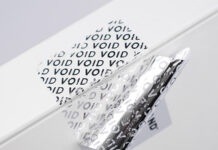The patented expandable shaft 100% in 3″ carbon fiber allows greater efficiency and effectiveness of winding
The new expandable shaft with multiple air chambers is adaptable to all types of machines and offers better energy efficiency and precision of production and operator control

Svecom – P.E. has introduced and patented a new expandable shaft made entirely of carbon fiber. The new expandable shaft with multiple air chambers has three ledges and offers unique mechanical properties in the sector. Among the main benefits of the carbon fiber shaft is the possibility of exceeding the normal speeds for shafts with a diameter of 3”, thus allowing working speeds of over 1200 m/min to be reached.
Svecom P.E. has created some years ago a business unit, Svecom Carbon Fiber, which combines the experience accumulated in over 60 years of production of expandable shafts with the advantages of using carbon fiber: this translates into a solution that maximizes mechanical performance and lightness.
The process includes a production system in which shafts of different sizes can be processed according to customer requirements using filament winding and roll-wrapping technologies.
The new 100% carbon fiber shaft has been specifically designed to meet the technical requirements required today. This allows to obtain very fast acceleration and deceleration times and to reach working speed in a shorter time compared to traditional shafts. Comparing it to the latter, operating speeds are achieved by reducing times up to 75% of the time, increasing consequently overall productivity.
The light nature of the carbon fiber also allows much higher maximum and peak working speeds, without vibrations of the shaft. Critical speeds increase significantly: + 98% compared to the steel shaft, + 119% compared to the aluminum shaft, + 35% compared to the aluminum shaft with carbon inserts.
A further advantage of the carbon fiber shaft is its low specific weight, which therefore limits the energy required to make it work in the machine. The specific weight is 65% lower than the steel shaft, 20% lower than the aluminum shaft and 32% lower than the carbon shaft with aluminum inserts.
The higher elastic modulus also confers greater rigidity and, consequently, with the application of a high load it will undergo minimal deformations.






















